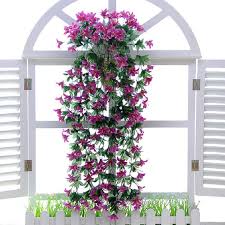Using Charcoal Containers to Enhance Grilling with Caja China

Grilling with a Caja China has become an incredibly popular method for outdoor cooking, particularly when preparing large cuts of meat such as whole pigs, turkeys, and chickens. One of the key elements that contributes to the success of Caja China is its ability to generate consistent and efficient heat, primarily through the use of charcoal. While the Caja China itself is designed to hold and direct heat, charcoal containers play a critical role in ensuring that the charcoal burns evenly and provides optimal heat for cooking.
This article will explore the benefits of using charcoal containers with the Caja China, explain how to set up and manage them effectively, and offer advice on how to use charcoal containers for the best results when grilling. Whether you’re new to Caja China or a seasoned grilling enthusiast, understanding the importance of using the right charcoal container can greatly improve the efficiency, safety, and flavor of your grilling experience.
What Is Caja China and How Does It Work?
Before diving into the specifics of using charcoal containers with Caja China, it’s important to understand how the Caja China works. The Caja China is a traditional Cuban roasting box that uses indirect heat for roasting meat. The concept is simple but effective: the meat is placed inside a box with charcoal placed on top. The heat from the charcoal cooks the meat evenly, allowing for a perfectly roasted result with crispy skin and tender meat inside.
The box itself is generally made of wood and metal, designed with vents to control the airflow and regulate the heat. The charcoal sits on top of a metal tray that distributes the heat down into the roasting chamber where the meat is located. This direct heat is what allows for roasting larger cuts of meat in a relatively short amount of time, compared to traditional methods of roasting in an oven or grill.
The Importance of Charcoal in Caja China Grilling
Charcoal plays a crucial role in the Caja China method of grilling. The heat generated by the charcoal is what drives the cooking process, and it must be managed carefully to ensure even cooking throughout the entire piece of meat. Using the right charcoal container can help you manage this heat more effectively.
There are several reasons why charcoal is preferred for grilling with the Caja China:
- High Heat Generation: Charcoal burns at a high temperature, which is essential for achieving the crisp, golden-brown skin on meats like pigs and chickens.
- Even Cooking: The heat from the charcoal is distributed evenly across the cooking surface, which helps ensure that the meat cooks uniformly without hotspots or undercooked areas.
- Long Burn Time: Charcoal can burn for longer periods of time compared to other heat sources, which makes it ideal for long cooking sessions like roasting a whole pig or preparing several large cuts of meat at once.
The Role of Charcoal Containers in Caja China Cooking
A charcoal container is designed to hold and manage the charcoal, ensuring that it burns evenly and efficiently. Using the right container can enhance the overall grilling process and improve the results in several key ways:
1. Even Heat Distribution
Charcoal containers help to distribute the heat more evenly across the entire cooking surface. Without a proper container, charcoal can shift or clump together, creating uneven cooking conditions. A good container will ensure that the charcoal burns uniformly, leading to consistent heat throughout the roasting process.
Benefits:
- Prevents hot spots or areas where the heat is insufficient.
- Helps produce evenly cooked meat with a perfect outer crust and juicy interior.
- Allows for better temperature control, especially for slow roasting.
2. Managing Charcoal Placement
One of the challenges when using charcoal for roasting is ensuring that the charcoal is placed in the right position for optimal heat. Charcoal containers help you manage this placement by providing a defined area for the charcoal to sit, which reduces the chances of overloading or underloading the heat source.
Benefits:
- Allows for precise control over the amount of charcoal being used.
- Reduces the risk of overcooking or burning the meat.
- Helps ensure that heat is applied consistently, without disruptions.
3. Airflow Regulation
For charcoal to burn efficiently, proper airflow is essential. Charcoal containers are designed with vents or openings that help regulate the airflow to the charcoal. This airflow control allows the charcoal to burn at the right temperature and for the right amount of time, ensuring that the meat cooks properly.
Benefits:
- Improves the efficiency of the charcoal burn, reducing the need for constant adjustments.
- Promotes an even temperature throughout the roasting process.
- Enhances the flavor by ensuring the charcoal burns cleanly.
Types of Charcoal Containers for Caja China
There are various types of charcoal containers available on the market, each designed to meet specific needs depending on the size of the Caja China, the type of charcoal being used, and the desired cooking results. Here are the most common types of charcoal containers for Caja China cooking:
1. Standard Charcoal Baskets
A charcoal basket is a simple yet effective container that holds the charcoal and allows it to burn evenly. These baskets are typically made of wire mesh or heavy-duty metal and are designed to fit inside the Caja China.
Features:
- Made of heat-resistant metal or mesh wire.
- Often designed to be placed directly on top of the meat inside the Caja China.
- Typically holds a sufficient amount of charcoal for medium to large-sized roasting projects.
Benefits:
- Allows for even burning and heat distribution.
- Easy to handle and move when adding or adjusting charcoal.
- Inexpensive and widely available.
Best For: Standard baskets are ideal for general use, especially when roasting a single large cut of meat like a whole pig or turkey.
2. Adjustable Charcoal Containers
An adjustable charcoal container offers more control over the heat by allowing you to adjust the height and position of the charcoal within the Caja China. This type of container can be raised or lowered to regulate the temperature applied to the meat, allowing for more precise cooking.
Features:
- Adjustable design that allows for changing the height of the charcoal.
- Often equipped with handles or mechanisms for easy adjustment during cooking.
- Made of durable, heat-resistant materials like steel or aluminum.
Benefits:
- Allows for better temperature control, especially for different types of meat that require varied cooking temperatures.
- Useful for multi-stage roasting, such as when different parts of the pig need to be cooked at different times.
Best For: Adjustable containers are perfect for those who want more flexibility and control over their cooking, especially for large, complex roasting tasks.
3. Charcoal Trays
A charcoal tray is a shallow container that holds the charcoal while allowing the heat to rise and cook the meat. These trays are often placed on top of the Caja China and help ensure that the charcoal burns efficiently and evenly.
Features:
- Shallow design that allows the charcoal to burn at a consistent level.
- Often includes heat-resistant handles or rims for easy handling.
- Can be made of metal or heavy-duty aluminum.
Benefits:
- Provides even heat distribution across the meat.
- Easy to replace or replenish with charcoal during longer roasting sessions.
- Allows for easy cleanup after the cooking process is complete.
Best For: Charcoal trays are great for longer cooking times and larger roasts, where constant monitoring and occasional replenishing of the charcoal may be necessary.
How to Use Charcoal Containers in Caja China
Now that we understand the benefits of charcoal containers, let’s go through the steps of using them effectively with your Caja China.
Step 1: Preparing the Charcoal
Start by selecting the right type of charcoal. Lump charcoal is often preferred for its ability to burn hotter and cleaner than briquettes, but briquettes can also be used for a more consistent and longer burn. Fill your charcoal container (basket, tray, or adjustable container) with the appropriate amount of charcoal.
Step 2: Lighting the Charcoal
Light the charcoal using a chimney starter or other preferred method. Allow the charcoal to burn until it reaches a glowing, white-hot state. This ensures that the charcoal will produce optimal heat for roasting.
Step 3: Setting Up the Caja China
Place the prepared charcoal container on top of the Caja China, ensuring that it is centered and secure. Open the Caja China and place your meat inside, ensuring it is properly positioned and ready for cooking.
Step 4: Managing the Heat
Once the charcoal is in place, close the Caja China and allow the heat to build up. Keep an eye on the temperature inside the box, adjusting the charcoal container’s position if you are using an adjustable model. Check periodically and add charcoal as necessary to maintain consistent heat.
Step 5: Cooking and Monitoring
During the cooking process, be sure to monitor the meat and adjust the charcoal container as needed to maintain the desired temperature. When the meat reaches the desired level of doneness, remove it from the Caja China and allow it to rest before serving.
Conclusion
Using charcoal containers with your Caja China is an essential step in ensuring that your meat is roasted to perfection. Whether you choose a standard charcoal basket, an adjustable container, or a charcoal tray, each type of container has its own advantages that can improve the consistency, efficiency, and flavor of your cooking. By understanding the role of these containers and how to use them effectively, you can achieve consistently delicious results for any occasion, from family barbecues to large parties. Take control of your grilling process with the right charcoal container and elevate your Caja China cooking to the next level.

